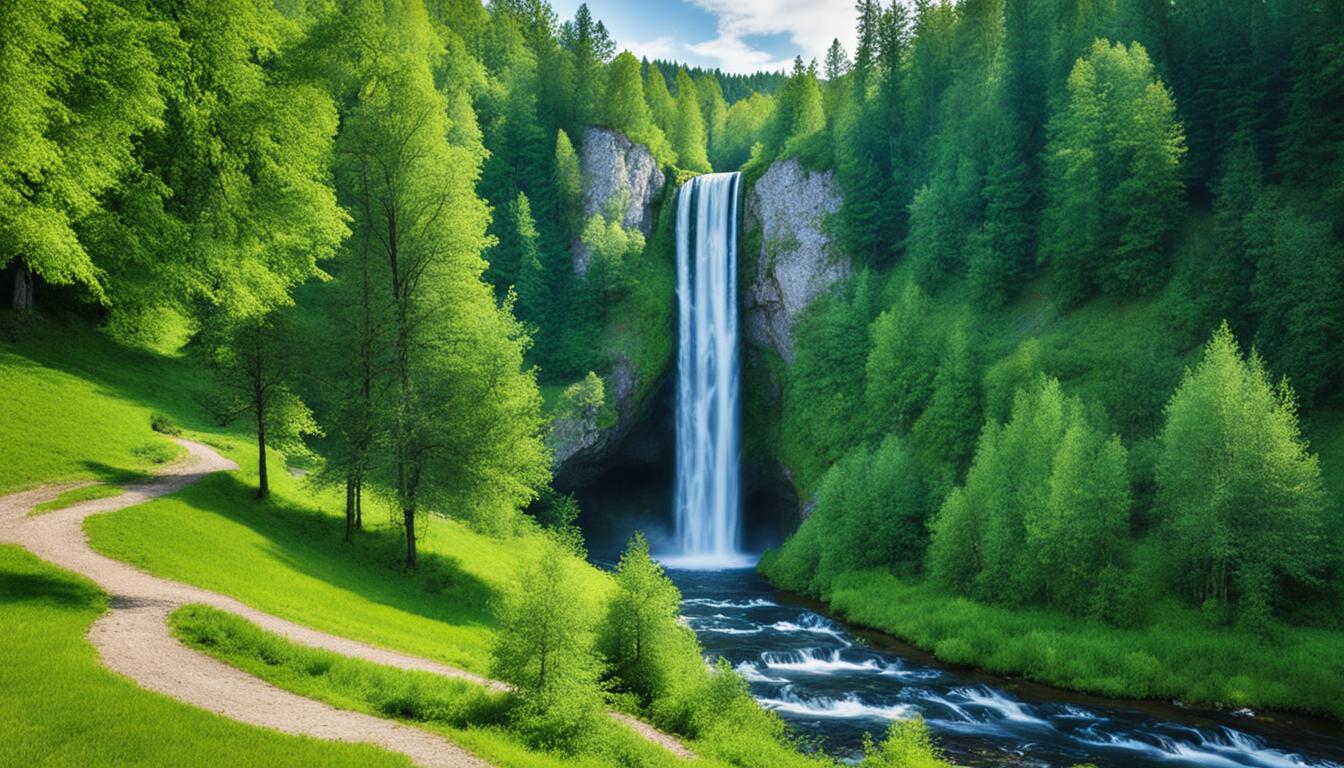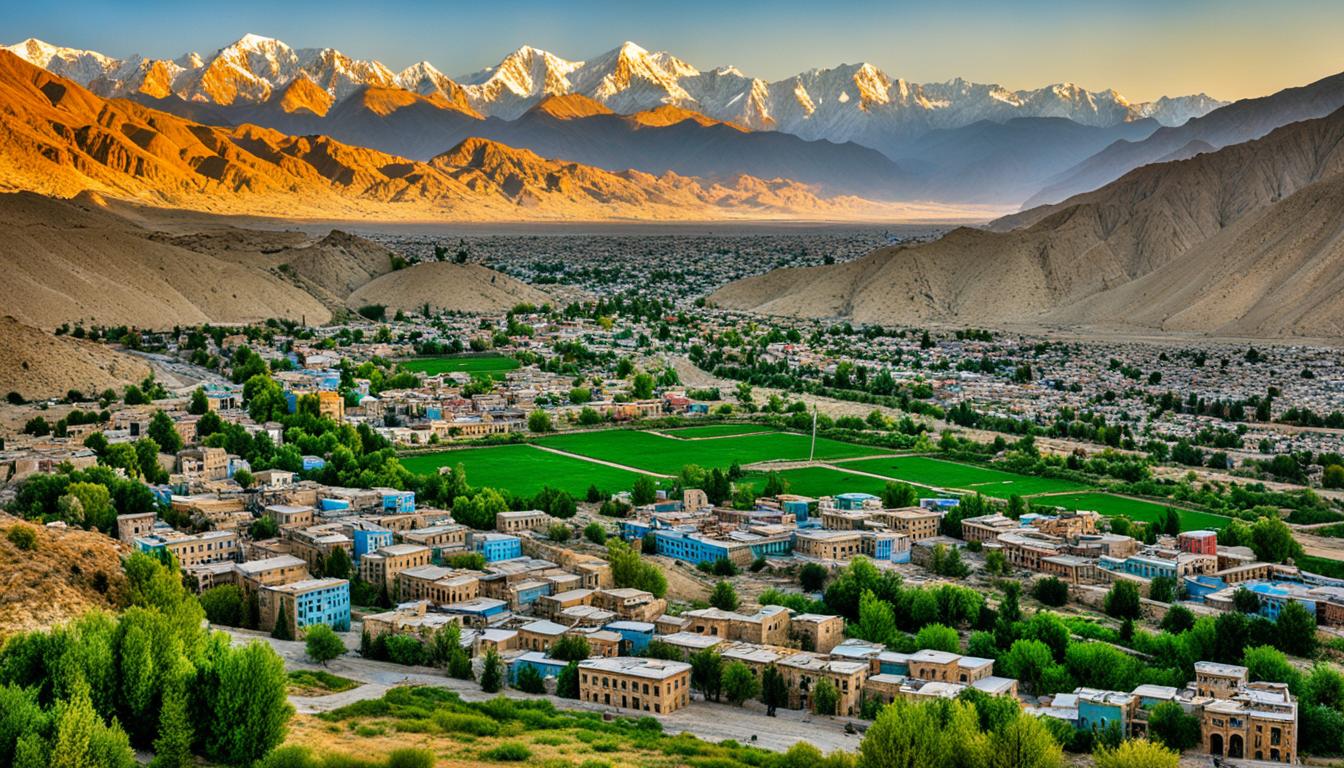Mauritius Biodiversity: Animal and Plant Species and What Is Under Threat
Mauritius is renowned for its diverse biodiversity, making it a true gem in the Indian Ocean. The island nation has been recognized as a “Centre of Plant Diversity” by the International Union for Conservation of Nature (IUCN). Its unique flora and fauna have evolved over millions of years, resulting in a high level of endemism, meaning many species can only be found here. However, this paradise is not without its challenges.
Habitat loss, invasive species, and climate change pose significant threats to the biodiversity in Mauritius. With only 2% of the island covered by native forest and several endangered plant species facing the risk of extinction, urgent action is needed to protect these precious natural resources. The devastation caused by human activities, such as deforestation and pollution, has already led to the extinction of iconic species like the Dodo and giant tortoises.
Conservation efforts in Mauritius are crucial to safeguard its unique species and ecosystems for future generations. By understanding the importance of endemic species, the threats they face, and the ongoing initiatives to protect them, we can all contribute to preserving the awe-inspiring biodiversity of Mauritius.
Key Takeaways:
- Mauritius is a biodiversity hotspot, home to many endemic species found nowhere else in the world.
- Habitat loss, invasive species, and climate change pose significant threats to Mauritius’ biodiversity.
- Conservation efforts in Mauritius focus on protecting endangered species and restoring ecosystems.
- Public awareness and engagement are crucial for successful biodiversity conservation in Mauritius.
- Preserving Mauritius’ unique flora and fauna is essential for the long-term sustainability of the island’s natural treasures.
Importance of Endemic Species in Mauritius
Mauritius is home to a remarkable number of endemic species that cannot be found anywhere else in the world. These unique plants and animals contribute significantly to the country’s rich biodiversity and play a crucial role in maintaining the delicate balance of ecosystems.
One of the most fascinating aspects of Mauritius’ endemic species is the high level of endemism across different taxonomic groups. For instance, approximately 39% of plant species, 80% of non-marine birds, 80% of reptiles, and 40% of bat species are endemic to the island.
The evolution of these endemic species in Mauritius can be attributed to the island’s unique combination of factors. Its isolated location, geological age, and distinct topography have resulted in the development of specialized adaptations and ecological niches for these species to thrive.
Preserving and protecting these endemic species is of utmost importance for the conservation of Mauritius’ flora and fauna. Due to their limited distribution, these species are often more vulnerable to extinction than their widespread counterparts. Losing any of these unique species would not only be a loss for Mauritius but also for the global biodiversity.
Efforts are being made to ensure the long-term survival of endemic species in Mauritius through various conservation initiatives. These include habitat restoration, the establishment of protected areas, and the implementation of strategies to control invasive species. By safeguarding these endemic species, we can maintain the ecological integrity and cultural heritage of Mauritius for future generations.
Endemic Species in Mauritius
| Category | Percentage of Endemic Species |
|---|---|
| Plant Species | 39% |
| Non-Marine Birds | 80% |
| Reptiles | 80% |
| Bat Species | 40% |
Threats to Mauritius Biodiversity
Despite its rich biodiversity, Mauritius faces several threats to its wildlife and ecosystems. Habitat loss is a major concern, with only 2% of the island covered by native forest. Endangered endemic plant species, including 141 flowering species, are classified as critically endangered. Several native vertebrate species, such as the Dodo and giant tortoises, have already gone extinct. Other threats include invasive species, pollution, and the adverse impacts of climate change.
Invasive species pose a significant danger to Mauritius’ biodiversity, as they outcompete and disrupt the native flora and fauna. The Mauritian Wildlife Foundation (MWF) is actively working to control and manage these invasive species to protect the delicate ecosystem. Pollution from human activities, such as agricultural runoff and improper waste disposal, also poses a threat to the island’s wildlife and waterways. Efforts are being made to raise awareness and implement measures to reduce pollution and promote sustainable practices.
The adverse impacts of climate change, including rising temperatures and sea levels, threaten the biodiversity hotspots in Mauritius. These changes can disrupt the delicate balance of ecosystems, leading to the extinction of species and the loss of unique habitats. The government, along with various conservation organizations, is taking steps to mitigate the effects of climate change and promote resilience in Mauritius’ wildlife and natural environments.
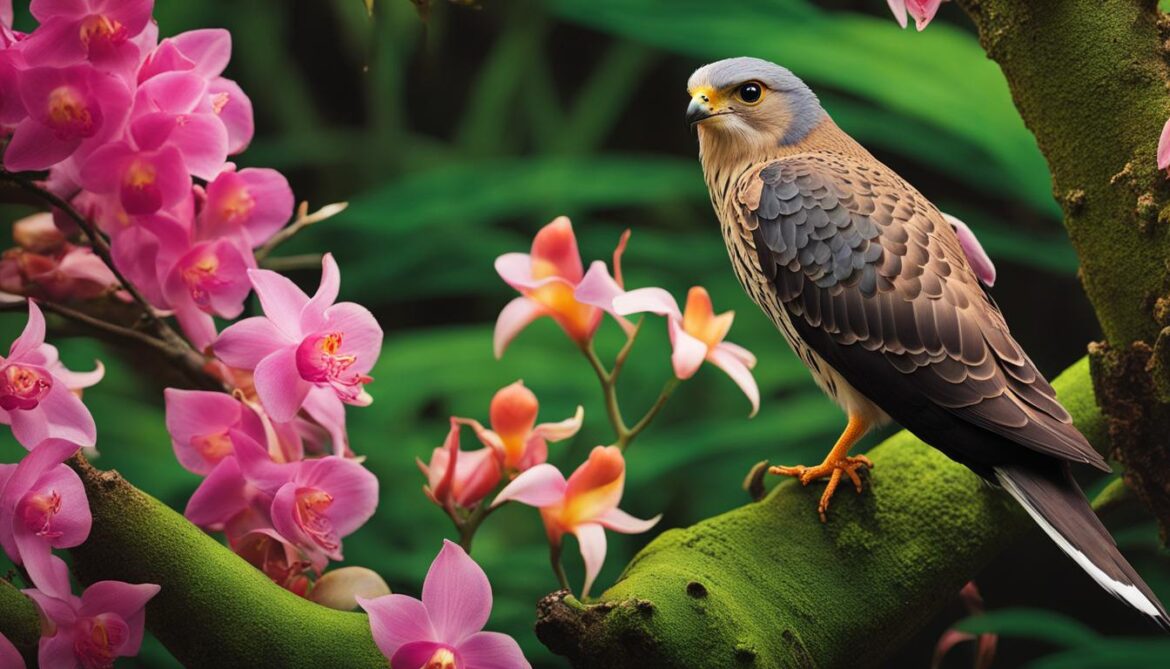
Conservation Efforts in Mauritius
Recognizing the importance of preserving its biodiversity, Mauritius has implemented various conservation efforts. The National Biodiversity Strategy and Action Plan (NBSAP) focuses on establishing a protected area network, managing key biodiversity components, enabling sustainable use of biodiversity, maintaining ecosystem services, and managing biotechnology.
The country has proclaimed protected areas and marine parks, and initiatives are in place for habitat restoration, invasive species management, and climate change mitigation.

These conservation efforts aim to safeguard the unique biodiversity hotspots in Mauritius and ensure the long-term survival of its endemic species. By creating protected areas and marine parks, Mauritius can create safe havens for its diverse flora and fauna, allowing these species to thrive in their natural habitats.
Habitat restoration initiatives play a vital role in reversing the damage caused by habitat loss and promoting the recovery of native plant and animal populations. By restoring degraded areas, Mauritius can create a more favorable environment for endangered species and enhance overall ecosystem health.
Managing invasive species is another crucial aspect of conservation efforts in Mauritius. Invasive species can outcompete native species, disrupt ecosystems, and contribute to the decline of endemic plants and animals. By implementing effective management strategies, Mauritius aims to control and eradicate invasive species, ensuring the survival of its unique biodiversity.
Mauritius also recognizes the need to address the impacts of climate change on its biodiversity. By implementing climate change mitigation strategies, such as reducing carbon emissions and promoting sustainable practices, Mauritius aims to minimize the adverse effects of climate change on its ecosystems and preserve its biodiversity for future generations.
Overall, the conservation efforts in Mauritius demonstrate the country’s commitment to protecting its biodiversity hotspots and ensuring the sustainability of its unique flora and fauna.
Endangered Species in Mauritius
Mauritius is home to several endangered species, including the Mauritius Kestrel, Parakeet, Cuckoo-shrike, Bulbul, White-Eye, and Rodrigues Brush Warbler. These species have been the focus of conservation efforts, with successful breeding programs and reintroduction initiatives. The Mauritian Wildlife Foundation, an NGO, plays a vital role in protecting and preserving these endangered species.
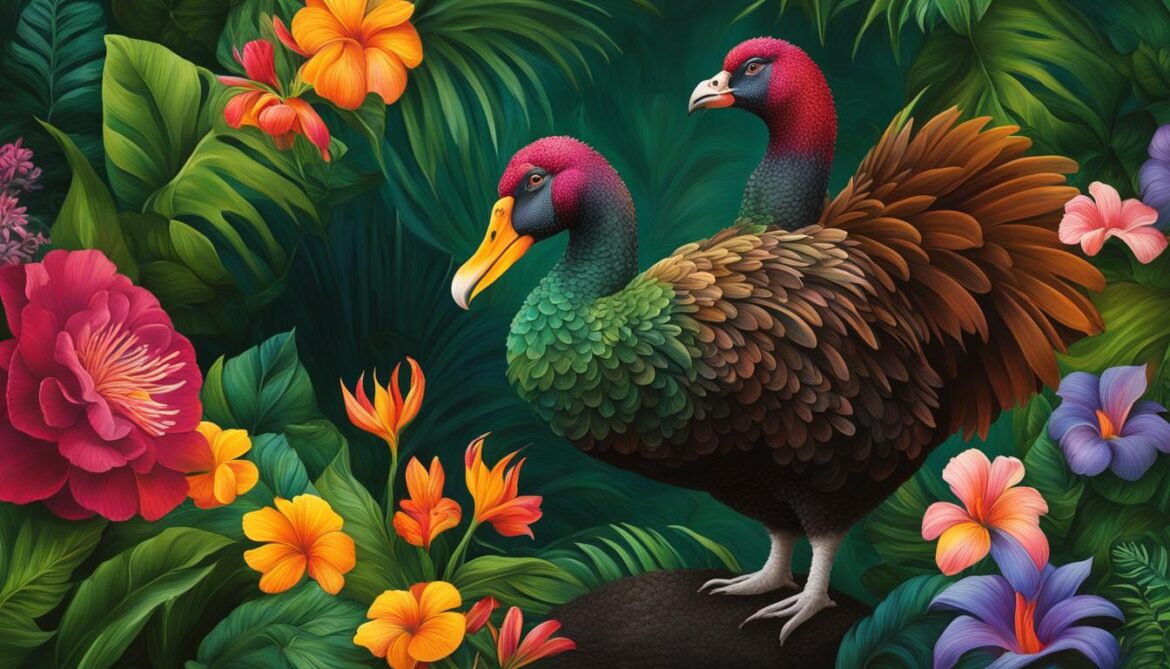
Marine Biodiversity in Mauritius
The marine environment of Mauritius is teeming with diverse species, highlighting the country’s remarkable marine biodiversity. With 786 species of fish, 17 species of marine mammals, and 2 species of marine turtles, these waters offer a wealth of life and ecological wonders.
One of the standout features of Mauritius’ marine ecosystem is its vibrant coral reefs. These reefs provide crucial habitats and nurseries for countless marine species, ensuring their survival and contributing to the overall health of the marine ecosystem. The intricate beauty of coral reefs is a sight to behold, with their colourful formations and intricate biodiversity.
However, the coral reefs and coastal ecosystems of Mauritius are facing numerous threats due to human activities. Sedimentation, pollution, overfishing, and destructive practices pose significant risks to these delicate ecosystems. The loss of coral reefs would not only result in the disappearance of breathtaking underwater landscapes but also disrupt the intricate balance and vital services they provide.

Efforts must be made to protect and conserve marine biodiversity in Mauritius. The preservation of coral reefs and the reduction of human impacts are of paramount importance for the continued existence of marine species and the overall health of ocean ecosystems.
| Species | Number of Species |
|---|---|
| Fish | 786 |
| Marine Mammals | 17 |
| Marine Turtles | 2 |
Table: Marine species in Mauritius
Importance of Seed Dispersers in Mauritius
The extinction of native seed dispersers, such as the dodo and giant tortoises, has had a significant impact on the biodiversity of Mauritius. Introduced species, like rats and pigs, are not effective seed dispersers and often destroy seeds. This loss of seed dispersal capacity poses a threat to the survival of many plant species, further exacerbating the risk of extinction for critically endangered flora.
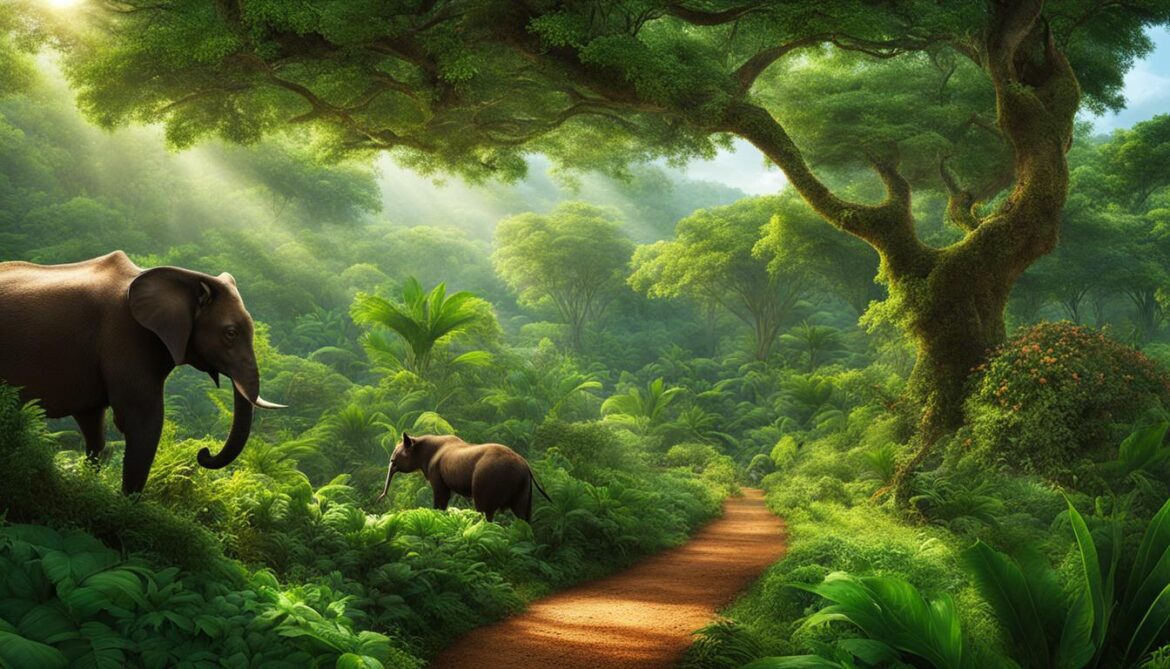
The extinction of key seed dispersers like the dodo and giant tortoises in Mauritius has disrupted the natural dispersal of plant seeds. These native species played a vital role in the dispersal of seeds across the island, contributing to the spread and survival of many plant species. As the only native seed dispersers, they had adaptations that allowed them to consume and disperse different plant seeds effectively. The dodo, for example, had a gizzard adapted to grind tough seeds, while giant tortoises transported seeds long distances in their guts before depositing them in new areas.
However, with the extinction of these native species, the responsibility of seed dispersal has fallen upon introduced species that are not as effective in carrying out this crucial ecological function. Rats and pigs, for instance, consume seeds but often destroy them or fail to disperse them effectively. This lack of effective seed dispersal has severe consequences for the biodiversity of Mauritius.
Endemic plant species, which are already at risk due to habitat loss and other threats, now face an additional challenge in their survival and regeneration. Many of these plant species depend on specific seed dispersers to transport their seeds to suitable habitats for germination and growth. Without the natural dispersal mechanisms provided by extinct native species, these plant species are confined to a limited range and struggle to establish new populations. As a result, the risk of extinction for critically endangered flora in Mauritius is further amplified.
To mitigate the loss of seed dispersers and support the survival of threatened plant species, efforts are being made to restore the ecological functions performed by the extinct native species. This includes exploring the possibility of reintroducing similar ecological equivalents or alternative seed dispersers to fill the gap left by the dodo and giant tortoises. Additionally, habitat restoration projects focus on creating suitable environments for the growth and dispersal of endemic plant species.
Efforts to Restore Ecosystems in Mauritius
Recognizing the importance of ecosystem restoration, initiatives have been undertaken in Mauritius to restore native forests and recreate lost habitats. These efforts include the propagation and planting of rare and threatened plant species, the establishment of seed banks and arboretums, as well as translocation programs for endangered reptiles. These restoration programs aim to recreate lost ecosystems and provide a habitat for endangered species.

Restoration Programs in Mauritius
| Program | Description |
|---|---|
| Kew Seed Conservation Initiatives | The Royal Botanic Gardens, Kew, collaborates with local institutions to collect, conserve, and propagate seeds of rare and threatened plants endemic to Mauritius. |
| Nature Mauritius Ecological Restoration | Nature Mauritius, in partnership with local communities, carries out ecological restoration projects to restore degraded habitats by removing invasive species, planting native species, and enhancing biodiversity. |
| Mauritian Wildlife Foundation | The Mauritian Wildlife Foundation focuses on habitat restoration and conservation through reforestation projects, seed banking, and the translocation of endangered reptiles to protected areas. |
“Restoration programs in Mauritius play a vital role in preserving the unique ecosystems and protecting endangered species. By focusing on native plant propagation, habitat recreation, and species translocation, Mauritius is making significant efforts to restore the natural balance and ensure the long-term survival of its precious biodiversity.”
Public Awareness and Engagement for Biodiversity Conservation
In Mauritius, raising public awareness and fostering engagement are vital aspects of conserving the country’s rich biodiversity. This section highlights the efforts made by organizations such as the Mauritian Wildlife Foundation and government initiatives to educate the public about the importance of conservation and the value of preserving Mauritius’ unique ecosystems.
The Mauritian Wildlife Foundation (MWF) is a leading organization dedicated to preserving the island’s biodiversity. They actively engage with the local community through various educational programs, guided tours, and community involvement initiatives. These efforts aim to raise awareness and instill a sense of responsibility towards conservation among the population.
“Our mission is to educate and inspire individuals to protect and conserve the unique biodiversity of Mauritius. Through community engagement and advocacy, we aim to ensure a sustainable future for all species.” – Mauritian Wildlife Foundation
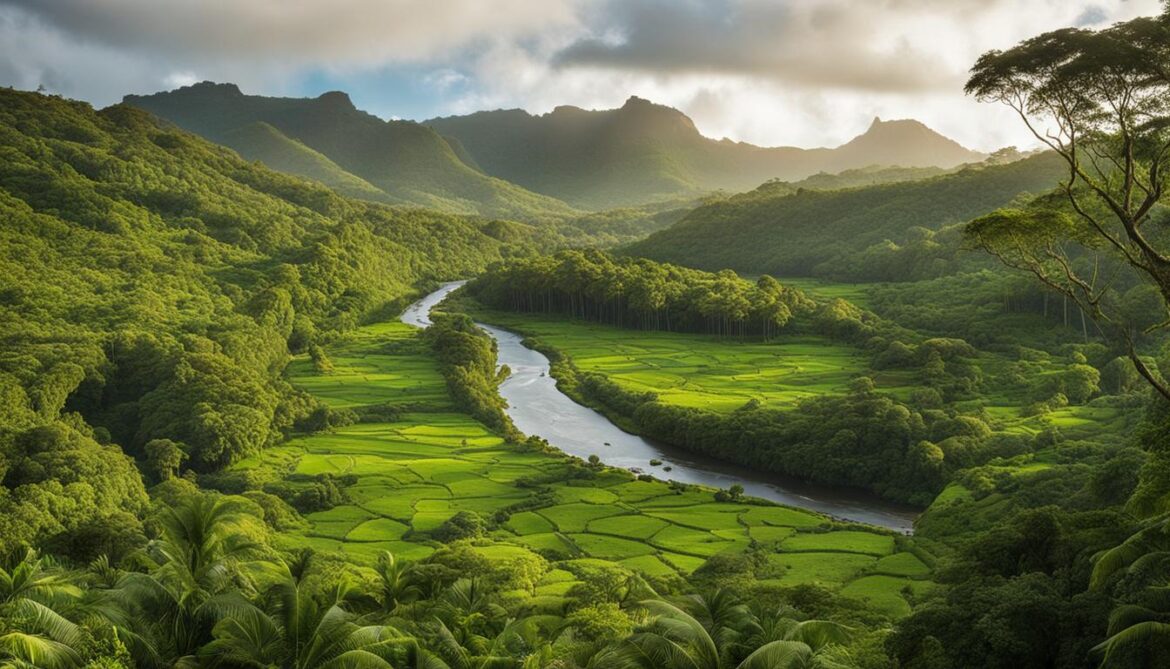
One of the key focuses of these awareness programs is emphasizing the significance of conserving Mauritius’ endemic and endangered species. The MWF, in collaboration with local schools and educational institutions, conducts workshops and educational campaigns to highlight the critical role these species play in maintaining the balance of ecosystems.
This comprehensive approach combines scientific research, practical conservation strategies, and public engagement to create a lasting impact on Mauritius’ biodiversity. By involving local communities and encouraging sustainable practices, these initiatives aim to safeguard the country’s natural heritage for future generations.
| Efforts for Public Awareness and Engagement | Impact |
|---|---|
| Workshops and educational campaigns | Increased awareness about the importance of biodiversity conservation |
| Guided tours and nature trails | Direct exposure to Mauritius’ unique flora and fauna, fostering love for nature |
| Community involvement programs | Active participation in conservation activities and sustainable practices |
Through ongoing public awareness and engagement efforts, Mauritius is fostering a sense of stewardship and inspiring individuals to take action in preserving the country’s natural treasures. By valuing their unique biodiversity, Mauritians are playing an essential role in the global conservation movement.
Conclusion
The rich biodiversity of Mauritius is a valuable asset that requires conservation and protection. Despite facing various challenges, the country has implemented impressive measures to safeguard its endemic species, restore ecosystems, and raise public awareness. Mauritius conservation efforts have played a crucial role in preserving the country’s unique flora and fauna.
Continued support and efforts in biodiversity conservation are essential for securing the future sustainability of Mauritius’ natural treasures. By maintaining ongoing conservation initiatives, we can strive to ensure the long-term survival and thriving of the diverse plant and animal species that call Mauritius home.
Let us work together to protect Mauritius biodiversity for generations to come. Through collaboration and dedication, we can preserve the enchanting landscapes and remarkable wildlife that make Mauritius a truly extraordinary destination.
FAQ
What is the significance of Mauritius’ biodiversity?
Mauritius is known for its rich biodiversity and is designated as a “Centre of Plant Diversity” by the International Union for Conservation of Nature (IUCN). The country is home to a high level of endemism, with many plant and animal species found only on the island.
What percentage of species in Mauritius are endemic?
Mauritius boasts a remarkable number of endemic species, with 39% of its plant species, 80% of non-marine birds, 80% of reptiles, and 40% of bat species found only on the island.
What are the threats to Mauritius’ biodiversity?
Mauritius faces threats such as habitat loss, invasive species, pollution, and the impact of climate change. These factors endanger the unique flora and fauna of the island.
What conservation efforts are in place in Mauritius?
Mauritius has implemented various conservation efforts, including establishing protected areas, managing biodiversity components, enabling sustainable use of biodiversity, and addressing the impacts of climate change.
Which endangered species are found in Mauritius?
Mauritius is home to several endangered species, including the Mauritius Kestrel, Parakeet, Cuckoo-shrike, Bulbul, White-Eye, and Rodrigues Brush Warbler.
What marine biodiversity is present in Mauritius?
Mauritius has a diverse range of marine species, including 786 species of fish, 17 species of marine mammals, and 2 species of marine turtles. Coral reefs are also prominent, supporting a variety of marine life.
How do seed dispersers impact Mauritius’ biodiversity?
The extinction of native seed dispersers like the dodo and giant tortoises has had a significant impact on the biodiversity of Mauritius. Introduced species are not effective seed dispersers, posing a threat to the survival of many plant species.
What efforts are being made to restore ecosystems in Mauritius?
Initiatives are underway to restore native forests and recreate lost habitats in Mauritius. These efforts include the propagation and planting of rare and threatened plant species, establishment of seed banks and arboretums, and translocation programs for endangered reptiles.
How is public awareness being raised for biodiversity conservation in Mauritius?
Organizations like the Mauritian Wildlife Foundation and government initiatives strive to educate the public about the value of biodiversity and the importance of conservation. Educational programs, guided tours, and community involvement are utilized to raise awareness and encourage sustainable practices.
Why is conservation important for Mauritius?
The rich biodiversity of Mauritius is a valuable asset that requires conservation and protection. Safeguarding endemic species, restoring ecosystems, and raising public awareness are crucial for the sustainability of Mauritius’ unique flora and fauna.





